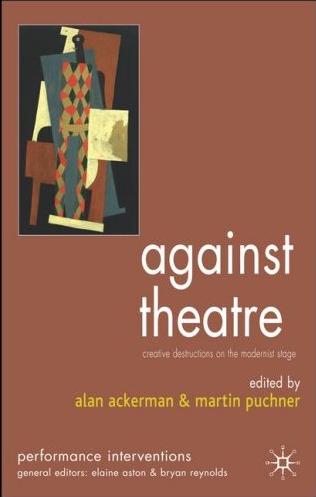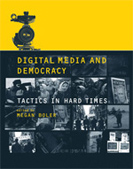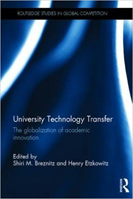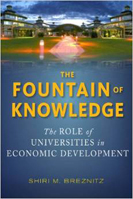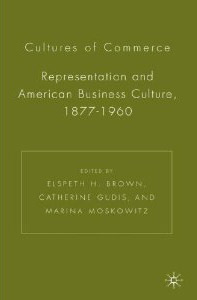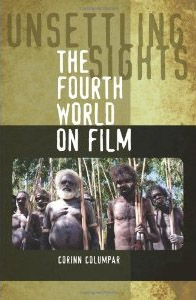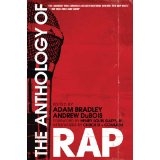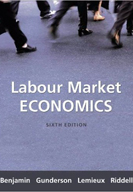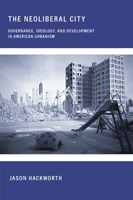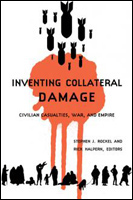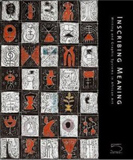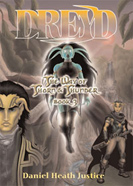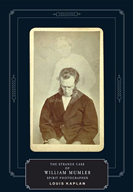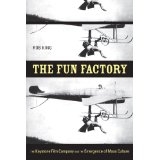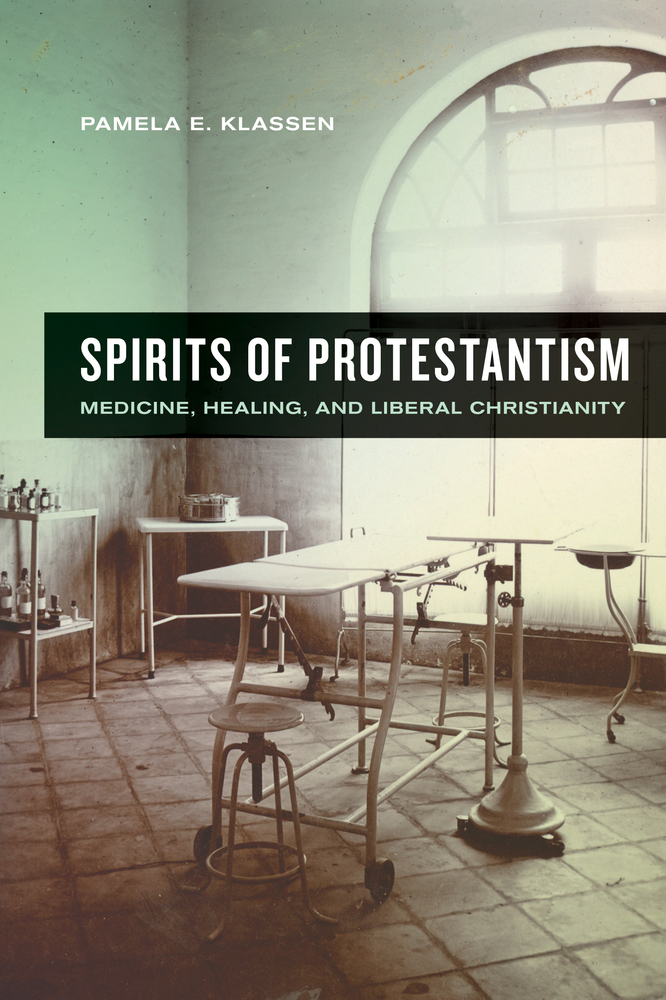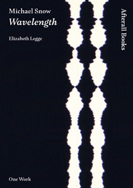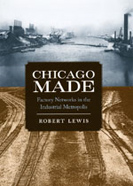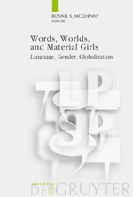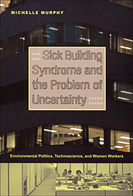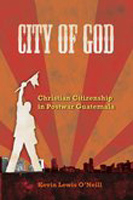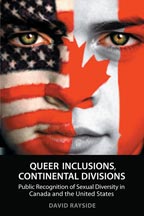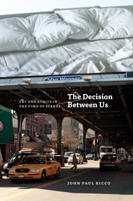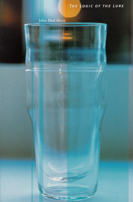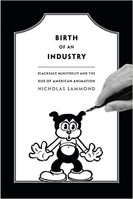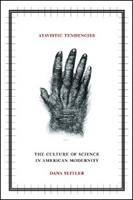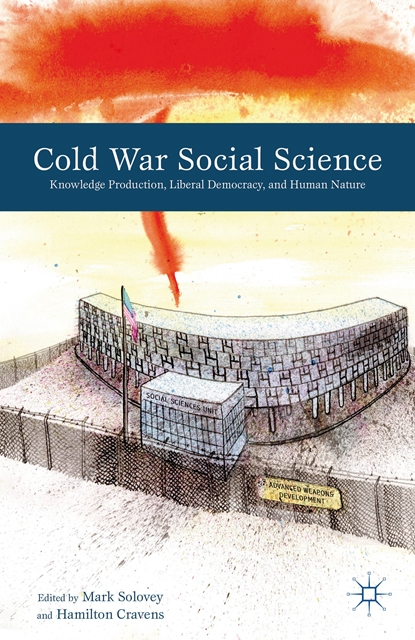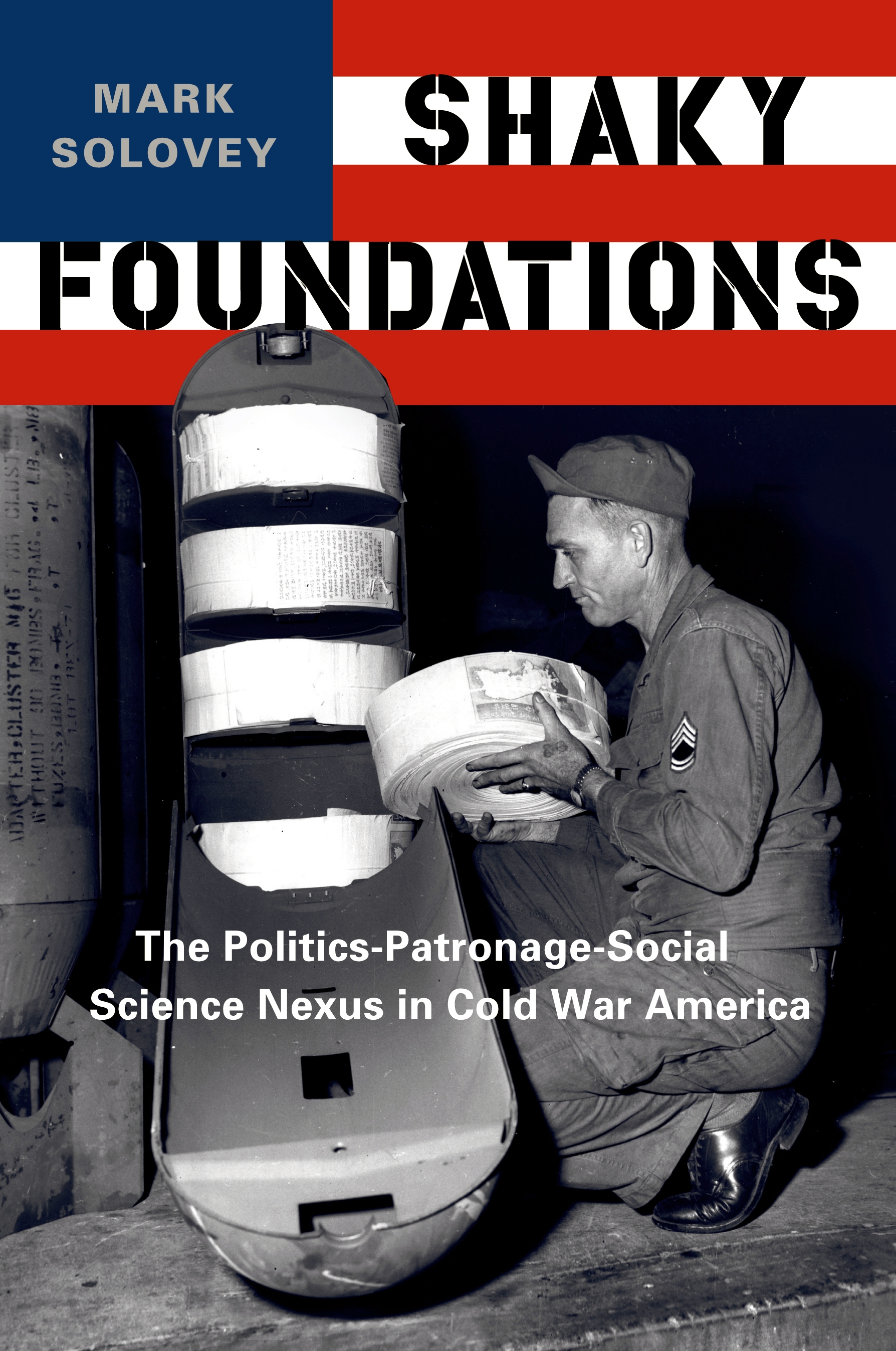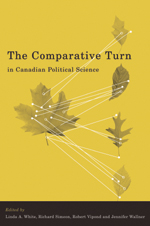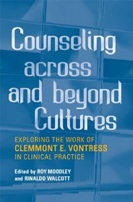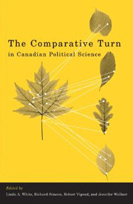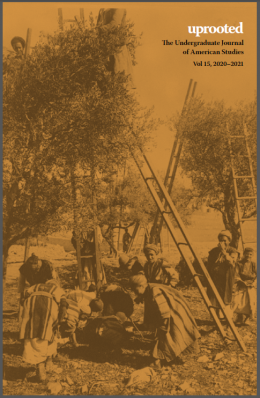Recent Affiliated Faculty Publications
Alan Ackerman
Professor, Department of English, University of Toronto
Against Theatre: Creative Destructions on the Modernist Stage (Palgrave Macmillan, 2006) with Martin Puchner. Against Theatre shows that the most prominent writers of modern drama shared a radical rejection of the theatre as they knew it. Together with designers, composers and film makers, they plotted to destroy all existing theatres. But from their destruction emerged the most astonishing innovations of modernist theatre. Click here for more info.
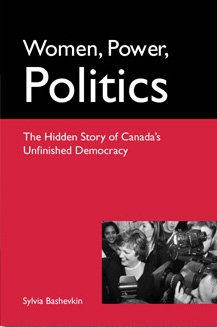
Sylvia Bashevkin
PROFESSOR, Department of Political Science, University of Toronto
Women, Power, Politics: The Hidden Story of Canada’s Unfinished Democracy(Oxford University Press Canada, 2009). In this engaging, no-nonsense and witty book, Sylvia Bashevkin argues that Canadians have a profound unease with women in positions of political authority—what she calls the “women plus power equals discomfort” equation. She explores why this discomfort is often so extreme in Canada. Bashevkin also evaluates a range of barriers faced by women who enter politics, including the media’s role in assessing the leadership styles, personal appearances and private lives of women politicians. In clear, accessible terms, Bashevkin explains concepts such as “gender schemas” and “media framing” with key examples, including Belinda Stronach and Hillary Clinton. Finally, Bashevkin outlines some compelling solutions to address the stalemate facing women in Canadian politics.
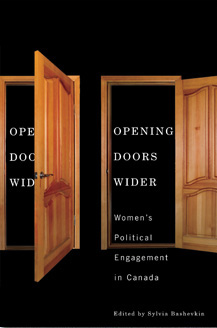
Opening Doors Wider: Women’s Political Engagement in Canada (UBC Press, 2009). Contributors include Sylvia Bashevkin, Caroline Andrew, Mary-Jo Nadeau, Manon Tremblay, with Stephanie Mullen, Louise Carbert, Lesley Byrne, Joanna Everitt and Michael Camp, Elizabeth Goodyear-Grant, Elisabeth Gidengil, Joanna Everitt, and Susan Banducci. From the days of the fur trade through the contemporary period, women have played important roles in the public life of Canada. Until the 1970s, however, these contributions were generally overlooked. Opening Doors Wider looks at the progress made in the last forty years to raise the profile of women’s involvement in public life. The contributors focus on two questions with reference to community activism, the politics of feminist organizing, parties and elections, and the communications environment in which politicians operate. First, are the doors to participation presently open wider than they were in the past? Second, how can these doors be opened wider, both in terms of real-world participation and our scholarly understanding of public engagement? These tightly argued essays shed new light on the quality of public involvement of women in one of the world’s most stable democracies. The nuanced discussion of solutions as well as problems makes it an indispensable resource for students and practitioners of politics at all levels.
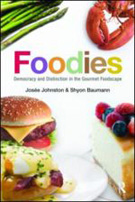
Shyon Baumann
Assistant Professor of Sociology, University of Toronto
Baumann, Shyon, and Johnston, Josée. Foodies: Democracy and Distinction in the Gourmet Foodscape (New York: Routledge, 2009). This important new and highly readable cultural analysis tells two stories about food. The first depicts good food as democratic. Foodies frequent ‘hole in the wall’ ethnic eateries, appreciate the pie found in working-class truck-stops, and reject the snobbery of fancy French restaurants with formal table-service. The second story describes how food operatesas a source of status and distinction for economic and cultural elites, indirectly maintaining and reproducing social inequality. While the first storyline insists that anybody can be a foodie, the second story asks foodies to look in the mirror and think about their relative social and economic privilege. By simultaneously considering both of these stories, and studying how they operate in tension, a delicious sociology of food becomes available, perfect for teaching a broad range of cultural sociology courses.
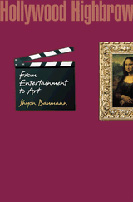
Hollywood Highbrow: From Entertainment to Art (Princeton Studies in Cultural Sociology), (Princeton, NJ: Princeton University Press, 2007). Today’s moviegoers and critics generally consider some Hollywood products–even some blockbusters–to be legitimate works of art. But during the first half century of motion pictures very few Americans would have thought to call an American movie “art.” Up through the 1950s, American movies were regarded as a form of popular, even lower-class, entertainment. By the 1960s and 1970s, however, viewers were regularly judging Hollywood films by artistic criteria previously applied only to high art forms. In Hollywood Highbrow, Shyon Baumann for the first time tells how social and cultural forces radically changed the public’s perceptions of American movies just as those forces were radically changing the movies themselves.
Megan Boler
Associate Chair, Department of Theory & Policy Studies, Ontario Institute for Studies in Education (OISE)
Digital Media and Democracy: Tactics in Hard Times (MIT Press, 2010). In an age of proliferating media and news sources, who has the power to define reality? When the dominant media declared the existence of WMDs in Iraq, did that make it a fact? Today, the “social web”—epitomized by blogs, viral videos, and YouTube—creates new pathways for truths to emerge and makes possible new tactics for media activism. In Digital Media and Democracy, leading scholars in media and communication studies, media activists, journalists, and artists explore the contradiction at the heart of the relationship between truth and power today: the fact that the radical democratization of knowledge and multiplication of sources and voices made possible by digital media coexists with the blatant falsification of information by political and corporate powers. The book maps a new digital media landscape that features citizen journalism, The Daily Show, blogging, and alternative media. The contributors discuss broad questions of media and politics, offer nuanced analyses of change in journalism, and undertake detailed examinations of the use of Web-based media in shaping political and social movements. The chapters include not only essays by noted media scholars but also interviews with such journalists and media activists as Amy Goodman of Democracy Now!, Media Matters host Robert McChesney, and Hassan Ibrahim of Al Jazeera.
Shiri M. Breznitz
Assistant Professor, Munk School of Global Affairs and Public Policy
Breznitz, Shiri M., and Etzkowitz, H. (eds.). University Technology Transfer: The globalization of academic innovation (Routledge, August 2015). Universities have become essential players in the generation of knowledge and innovation. Through the commercialization of technology, they have developed the ability to influence regional economic growth. By examining different commercialization models this book analyses technology transfer at universities as part of a national and regional system. It provides insight as to why certain models work better than others, and reaffirms that technology transfer programs must be linked to their regional and commercial environments.
Breznitz, Shiri M. The Fountain of Knowledge: The Role of Universities in Economic Development (Stanford University Press, July 2014). Today, universities around the world find themselves going beyond the traditional roles of research and teaching to drive the development of local economies through collaborations with industry. At a time when regions with universities are seeking best practices among their peers, Shiri M. Breznitz argues against the notion that one university’s successful technology transfer model can be easily transported to another. Rather, the impact that a university can have on its local economy must be understood in terms of its idiosyncratic internal mechanisms, as well as the state and regional markets within which it operates.
Elspeth Brown
Associate Professor, Department of History, University of Toronto
Cultures of Commerce: Representation and American Business Culture, 1877-1960 (Palgrave Macmillan, 2006). While both the structural changes in American business and their impact on workers have been explored in depth by historians, the broader impact of business on other cultural forms, and vice versa, is only now beginning to be studied.This anthology contributes to the new scholarship occurring at the intersection of business history and the study of cultural forms, ranging from material to visual culture to literature.Click here for more info.
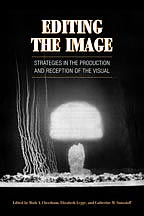
Mark Cheetham
Art, University of Toronto
Edited Editing the Image: Strategies inthe Production and Reception of the Visual(University of Toronto Press, 2007). The editing process is a vital part of virtually every form of media. Primarily associated with texts and written language, editing is equally essential, if less examined, in regard to visual media. Editing the Image looks at the editing of visual media as both a series of technical exercises and as an allegory. It touches on concerns that are crucial to the history of art and visual culture, as well as those media and institutions that produce and disseminate the visualarts in our society. Featuring contributors from a wide range of disciplines, Editing the Image considers editing in the context of academic journals, art-historical texts, illustrated books, museum displays, and exhibitions. It is an inclusive analysis of visual forms commonly associated with the process of editing, photography, film, and video, as well as some that are not intrinsically linked to editing, painting, sculpture, and architecture. In addition to wide-ranging academic considerations, this collection includes discussions of moving picture media and studio art by practitioners, giving the study a practical focus. For anyone who has considered the implications of the editorial process, this work will be of significant interest.
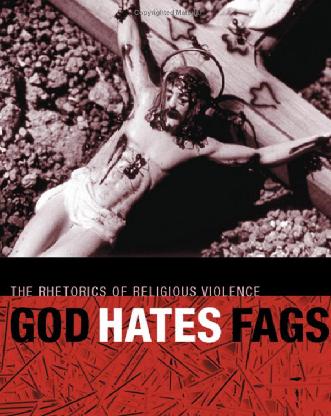
Michael Cobb
English, University of Toronto
God Hates Fags: The Rhetorics of Religious Violence (NYU Press, 2006). Though long thought of as one of the most virulently anti-gay genres of contemporary American politics and culture, in God Hates Fags, Michael Cobb maintains that religious discourses have curiously figured as the most potent and pervasive forms of queer expression and activism throughout the twentieth century. Cobb focuses on how queers have assumed religious rhetoric strategically to respond to the violence done against them, alternating close readings of writings by James Baldwin, Tennessee Williams, Jean Toomer, Dorothy Allison, and Stephen Crane with critical legal and political analyses of Supreme Court Cases and anti-gay legislation. He also pays deep attention to the political strategies, public declarations, websites, interviews, and other media made by key religious right organizations that have mounted the most successful regulations and condemnations of homosexuality. Click here for more info.
Corinn Columpar
Assistant Professor, Dept. of English/Cinema Studies, University of Toronto
Unsettling Sights:The Fourth World on Film (Southern Illinois University Press, 2010) is dedicated to the construction and transnational circulation of Aboriginality as sign in contemporary narrative cinema from the United States, Canada, New Zealand, and Australia. Reading over twenty features by both Aboriginal and non-Aboriginal filmmakers through a lens informed by film theory, postcolonial theory, and Indigenous theory, it concerns itself with the political and aesthetic dimensions of representation. Specifically, it identifies a wide-array of conventions by which Aboriginality is constructed and, in turn, explores the legibility and resonance of those conventions both inside and outside of the specific national contexts in which they are employed. In the process, Aboriginality emerges as grounds for not only the stereotyped (noble) savage of ethnographic cinema, but also a political identity derived from an international Indigenous movement, which has the capacity to recast local phenomena resulting from settler colonialism as global in dimension and systemic in nature.
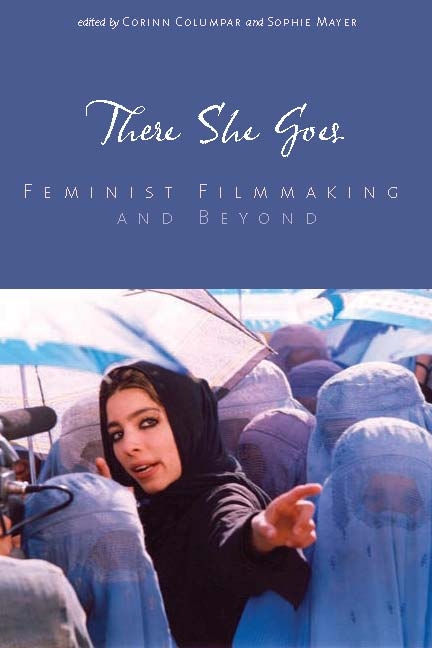
There She Goes: Feminist Filmmaking and Beyond (Wayne State University Press, 2009) is dedicated to the flows within and through feminist film culture. Attending to women’s work at the interstices – be it between different branches of the film industry, modes of filmmaking, national or transnational contexts, exhibition media, and varieties of visual representation — in order to assess the exchanges that such syncretic labors yield, it contextualizes traditional screen cinema within a larger field of artistic production, which includes still photography, music videos, installation art, digital media, performance art, and dance. In so doing, it follows in the footsteps of the filmmakers whose work it features (including Miranda July, Janie Geiser, Tracey Moffatt, Sally Potter, Cindy Sherman, Samira Makhmalbaf, Sadie Benning, Agnès Varda, Kim Longinotto, and Michelle Citron), making trouble not only in the archives but also at the boundaries between artistic, industrial, political, critical, and disciplinary practices.
Andrew DuBois
Associate Professor, Department of English, University of Toronto
The Anthology of Rap (New Haven, CT: Yale University Press, forthcoming 2010). From the school yards of the South Bronx, to the tops of the Billboard charts, rap has emerged as one of the most influential cultural forces of our time. In The Anthology of Rap, editors Adam Bradley and Andrew DuBois demonstrate that rap is also a wide-reaching and vital poetic tradition born of beats and rhymes. This pioneering anthology brings together more than three hundred lyrics written over thirty years, from the “old school” to the “golden age” to the present day. Rather than aim for encyclopedic coverage, Bradley and DuBois render through examples the richness and diversity of rap’s poetic tradition. They feature both classic lyrics that helped define the genre, including Grandmaster Flash & the Furious Five’s “The Message” and Eric B. & Rakim’s “Microphone Fiend,” as well as lesser-known gems like Blackalicious’ “Alphabet Aerobics” and Jean Grae’s “Hater’s Anthem.” Both a fan’s guide and a resource for the uninitiated, The Anthology of Rapshowcases the inventiveness and vitality of rap’s lyrical art. The volume also features an overview of rap poetics and the forces that shaped each period in rap’s historical development, as well as a foreword by Henry Louis Gates, Jr., and an afterword by Common. Enter the Anthology to experience the full range of rap’s artistry and discover a rich poetic tradition hiding in plain sight.
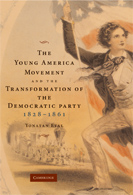
Yonatan Eyal
Assistant Professor, UTM Department of Historical Studies, University of Toronto
The Young America Movement and the Transformation of the Democratic Party, 1828-1861 (Cambridge: Cambridge University Press, 2007). The phrase “Young America” connoted territorial and commercial expansion in the antebellum United States. During the years leading up to the Civil War, it permeated various parts of the Democratic Party, producing new perspectives in the realms of economics, foreign policy, and constitutionalism. Led by figures such as Senator Stephen A. Douglas of Illinois, and editor John L. O’Sullivan of New York, Young America Democrats gained power during the late 1840s and early 1850s. They challenged a variety of orthodox Jacksonian assumptions, influencing both the nation’s foreign policy and its domestic politics. This is the first book to offer an exclusively political history of Young America’s impact on the Democratic Party, complementing existing studies of the literary and cultural dimensions of this group. This close look at the Young America Democracy sheds light on the political realignments of the 1850s and the coming of the Civil War, in addition to showcasing the origins of America’s longest existing political party.
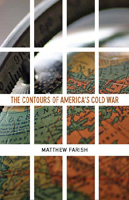
Matthew Farish
Assistant Professor, Department of Geography, University of Toronto
In The Contours of America’s Cold War (University of Minnesota Press, 2010), Matthew Farish explores new ways of conceptualizing post-World War II American militarism. He demonstrates how the social sciences were militarized in the early Cold War period, producing spatial knowledge that was of immediate use to the state as it sought to expand its reach across the globe. Farish investigates how the scales of the city, the continent, the region, the globe, and, by extension, outer space were brought together as strategic spaces, categories that provided a cartographic orientation for the Cold War. Backed by military and intelligence funding, physicists and policy makers, soldiers and social scientists came together to study and shape the United States and its place in a divided world.
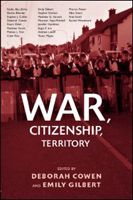
Emily Gilbert
Associate Professor, Graduate Program in Geography, University of Toronto
Gilbert, Emily, and D. Cowen (editors). War, Citizenship, Territory (New York: Routledge, 2008). For all too obvious reasons, war, empire, and military conflict have become extremely hot topics in the academy. Given the changing nature of war, one of the more promising areas of scholarly investigation has been the development of new theories of war and war’s impact on society. War, Citizenship, Territory features 19 chapters that look at the impact of war and militarism on citizenship, whether traditional territorially-bound national citizenship or “transnational” citizenship. The editors argue that while there has been an explosion of work on citizenship and territory, Western academia’s avoidance of the immediate effects of war (among other things) has led them to ignore war, which they contend is both pervasive and well nigh permanent. This volume sets forth a new, geopolitically based theory of war’s transformative role on contemporary forms of citizenship and territoriality, and includes empirical chapters that offer global coverage.
MORLEY GUNDERSON
CIBC CHAIR OF YOUTH EMPLOYMENT, UNIVERSITY OF TORONTO; PROFESSOR, CENTRE FOR INDUSTRIAL RELATIONS AND DEPT. OF ECONOMICS
Labour Market Economics: Theory, Evidence and Policy in Canada, 7th edition, Toronto: McGraw-Hill, 2012 (with D. Benjamin, C. Riddell, and T. Lemieux). Market leading, Labour Market Economics balances the right theoretical coverage with Canadian policy issues. The pedagogy focuses on worked examples, extensive problem material, clear figure captions and a glossary. The text provides students with the tools they need for critical thinking about labour market problems. Canadian labour issues are discussed within the context of a more general theoretical and empirical framework applicable to the labour problems of most developed countries. Thomas Lemieux from the University of British Columbia joins the author team for the seventh edition of the text.
Jason Hackworth
Associate Professor and Undergraduate Coordinator, Department of Geography
The Neoliberal City: Governance, Ideology and Development in American Urbanism. (Ithaca and London: Cornell University Press, 2007). The shift in the ideological winds toward a “free-market” economy has brought profound effects in urban areas. The Neoliberal City presents an overview of the effect of these changes on today’s cities. The term “neoliberalism” was originally used in reference to a set of practices that first-world institutions like the IMF and World Bank impose on third-world countries and cities. The support of unimpeded trade and individual freedoms and the discouragement of state regulation and social spending are the putative centerpieces of this vision. More and more, though, people have come to recognize that first-world cities are undergoing the same processes. In The Neoliberal City, Jason Hackworth argues that neoliberal policies are in fact having a profound effect on the nature and direction of urbanization in the United States and other wealthy countries, and that much can be learned from studying its effect. He explores the impact that neoliberalism has had on three aspects of urbanization in the United States: governance, urban form, and social movements. The American inner city is seen as a crucial battle zone for the wider neoliberal transition primarily because it embodies neoliberalism’s antithesis, Keynesian egalitarian liberalism. Focusing on issues such as gentrification in New York City; public-housing policy in New York, Chicago, and Seattle; downtown redevelopment in Phoenix; and urban-landscape change in New Brunswick, N.J., Hackworth shows us how material and symbolic changes to institutions, neighborhoods, and entire urban regions can be traced in part to the rise of neoliberalism.
Rick Halpern
Professor, Department of History; Vice-Principal, Academic, and Dean,
University of Toronto Scarborough
Halpern, Rick, and Stephen J. Rockel. Inventing Collateral Damage: Civilian Casualties, War, and Empire: Civilian Casualties, War and Empire (Toronto: Between the Lines, 2009). The term “collateral damage,” a euphemism for civilian casualty, came into usage during the Vietnam War, and over several decades became entrenched in U.S. armed forces jargon. But long before the phrase was coined there were non-combatant victims of wars. Emerging from a major international conference on the subject, Inventing Collateral Damage is a collection of excellent and varied studies of civilian casualty through history: in early modern Europe, eighteenth- and nineteenth-century North America, colonial and post-colonial conflicts, the world wars of the twentieth century, and the present day. The collection includes an impressive historical interpretation of the topic by Stephen Rockel, and a sensitive conclusion by the noted historian Natalie Zemon Davis.
Elizabeth Harney
Associate Professor, Department of Fine Art History, University of Toronto
Harney, Elizabeth, Christine Mullen Kreamer, Polly Nooter Roberts, and Allyson Purpura.Inscribing Meaning: African Arts of Writing and Inscription, co-edited with (National Museum of African Art/UCLA Fowler Museum of Cultural History/Five Continents Press, 2007). Exploring the multiple messages and aesthetic intent of works that creatively incorporate script, both for its literal content as well as the beauty of its form, the book includes 90 exceptional works of art dating from ancient to contemporary times. Inscribing Meaning celebrates the ingenuity and creativity of African artists from around the continent who bring script and graphic forms of communication into a wide range of artworks. Readers will learn about Africa’s long history of written languages and literacy, and the spectacular works of art will illustrate a range of indigenous African writing systems that have received little attention outside of Africa as both visually compelling and historically significant forms of art. These include: everyday and ritual objects, religious painting and manuscripts, protective talismans, commemorative cloth, public and popular arts, and contemporary painting, sculpture, prints, installation art, photography, and video.
Daniel Heath Justice
Associate Professor, Department of English, University of Toronto
Dreyd (volume three of The Way of Thorn and Thunder, Indigenous fantasy trilogy; Wiarton, ON: Kegedonce Press, 2007). The Eternity Tree has fallen, and with it falls Sheynadwiin. The forces of Eromar ravage the Everland, and the skies are filled with the smoke and ashes of the burning forests. Those Folk who do not escape into the far mountains and hidden valleys are driven into the broken westlands of Humanity, where Dreydmaster Vald reveals the full vision of his grand ambition, one that will annihilate even the memory of the Kyn and their kind. Never since the Melding have they faced such danger. Will their roots hold fast, or will they be lost upon the storm? Can they find a safe middle path on this way of thorn and thunder? Daniel Heath Justice wraps up his critically acclaimed trilogy, The Way of Thorn and Thunder with Dreyd.
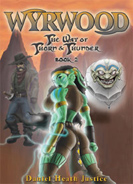
Wyrwood (volume two of The Way of Thorn and Thunder, Indigenous fantasy trilogy; Wiarton, ON: Kegedonce Press, 2006).
“What a treasure for anyone looking for heroes and adventure in a series based on Aboriginal philosophy and wisdom”
– Richard Van Camp, Author, Angel Wing Splash Pattern.
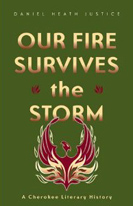
Our Fire Survives the Storm: A Cherokee Literary History (Minneapolis: University of Minnesota Press, 2006). Once the most powerful indigenous nation in the southeastern United States, the Cherokees survive and thrive as a people nearly two centuries after the Trail of Tears, and a hundred years after the allotment of Indian Territory. In Our Fire Survives the Storm, Justice traces the expression of Cherokee identity in that nation’s literary tradition. Through cycles of war and peace, resistance and assimilation, trauma and regeneration, Cherokees have long debated what it means to be Cherokee through protest writings, memoirs, fiction, and retellings of traditional stories. Justice employs the Chickamauga consciousness of resistance and Beloved Path of engagement—theoretical approaches that have emerged out of Cherokee social history—to interpret diverse texts composed in English, a language embraced by many as a tool of both access and defiance. Justice’s analysis ultimately locates the Cherokees as a people of many perspectives, many bloods, mingled into a collective sense of nationhood. Just as the oral traditions of the Cherokee people reflect the living realities and concerns of those who share them, Justice concludes, so too is their literary tradition a textual testament to Cherokee endurance and vitality.
Louis Kaplan
Professor, Department of Visual Studies (UTM); Graduate Department of Art
Jackman Humanities Institute Faculty Research Fellow (2014-2015)
The Strange Case of William Mumler, Spirit Photographer (Minneapolis: University of Minnesota Press, 2008). This book provides the story of the birth of spirit photography and the controversy surrounding its discovery. In the 1860s, William Mumler photographed ghosts—or so he claimed. The practice came to be known as spirit photography, and Mumler’s insistence that his work brought back the dead led to a sensational trial in 1869 that was the talk of the nation. The Strange Case of William Mumler, Spirit Photographer is the definitive resource for this fascinating moment in American history and provides insights into today’s ghosts in the machine.
http://www.upress.umn.edu/book-division/books/the-strange-case-of-william-mumler-spirit
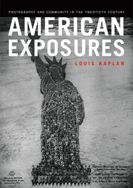
American Exposures: Photography and Community in the Twentieth Century(Minneapolis: University of Minnesota Press, 2005). American Exposures offers a fascinating analysis of how photographers image and imagine American community. It sheds light on a wide range of photographs and asserts that the depiction of community is a central component to photography. From Edward Steichen’s Family of Man exhibition to Pedro Meyer and the rise of the digital image, Louis Kaplan points to a new way to think about the intimate relationship among photography, American life, and the artistic imagination.
http://www.upress.umn.edu/book-division/books/american-exposures
Rob King
Assistant Professor, Department of History, University of Toronto
The Fun Factory: The Keystone Film Company and the Emergence of Mass Culture(University of California Press, 2009). From its founding in 1912, the short-lived Keystone Film Company–home of the frantic, bumbling Kops and Mack Sennett’s Bathing Beauties—made an indelible mark on American popular culture with its high-energy comic shorts. Even as Keystone brought “lowbrow”comic traditions to the screen, the studio played a key role in reformulating those traditions for a new, cross-class audience. In The Fun Factory, Rob King explores the dimensions of that process, arguing for a new understanding of working-class cultural practices within early cinematic mass culture. He shows how Keystone fashioned a style of film comedy from the roughhouse humor of cheap theater, pioneering modes of representation that satirized film industry attempts at uplift. Interdisciplinary in its approach, The Fun Factory offers a unique studio history that views the changing politics of early film culture through the sociology of laughter.”
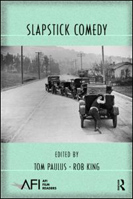
King, Rob, and Tom Paulus. Slapstick Comedy (New York: Routledge, 2010). From Chaplin’s tramp to the Bathing Beauties, from madcap chases to skyscraper perils, slapstick comedy supplied many of the most enduring icons of American cinema in the silent era. This collection of fourteen essays by prominent film scholars challenges longstanding critical dogma and offers new conceptual frameworks for thinking about silent comedy’s place in film history and American culture. The contributors discuss a broad range of topics including the contested theatrical or cinematic origins of slapstick; the comic spectacle of crazy technology and trick stunts; the filmmakers who shaped the style of early slapstick; and comedy’s implications for theories of film form and spectatorship. This volume is essential reading for anyone seeking to understand the origins and continued importance of a film genre at the heart of American cinema from its earliest days to today.
Pamela E. Klassen
Professor, Department and Centre for the Study of Religion,
University of Toronto
Klassen, Pamela E. Spirits of Protestantism: Medicine, Healing, and Liberal Christianity (Berkeley: University of California Press, 2011). Spirits of Protestantismreveals how liberal Protestants went from being early-twentieth-century medical missionaries seeking to convert others through science and scripture, to becoming vocal critics of missionary arrogance who experimented with non-western healing modes such as Yoga and Reiki. Drawing on archival and ethnographic sources, Pamela E. Klassen shows how and why the very notion of healing within North America has been infused with a Protestant “supernatural liberalism.” In the course of coming to their changing vision of healing, liberal Protestants became pioneers three times over: in the struggle against the cultural and medical pathologizing of homosexuality; in the critique of Christian missionary triumphalism; and in the diffusion of an ever-more ubiquitous anthropology of “body, mind, and spirit.” At a time when the political and anthropological significance of Christianity is being hotly debated, Spirits of Protestantism forcefully argues for a reconsideration of the historical legacies and cultural effects of liberal Protestantism, even for the anthropology of religion itself. In 2012, the book won an Award of Excellence from the American Academy of Religion.
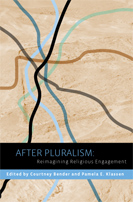
Klassen, Pamela E., and Courtney Bender. After Pluralism: Reimagining Religious Engagement (New York: Columbia University Press, 2010). Religious pluralism has become a powerful ideal in contemporary life, defining the landscape of religious diversity while prescribing modes of acting across difference. Taking this ideal as a starting place, the contributors to this volume treat pluralism as historically and ideologically produced and as a doctrine that is embedded within a range of political, civic, and cultural institutions. Their critique interrogates the possibility that religious difference itself is framed as a problem only pluralism can solve. Working comparatively across nations and disciplines, these essays explore pluralism as a “term of art” setting the norms of identity and the parameters of exchange, encounter, and conflict. Contributors locate pluralism’s ideals in diverse sites-Broadway plays, Polish Holocaust memorials, Egyptian dream interpretations, German jails, and legal theories – and demonstrate its shaping of political and social interaction in surprising and powerful ways. Throughout they question assumptions underlying pluralism’s discourse and its influence on the legal decisions that determine modern religious practice. Contributors do more than deconstruct this theory; they tackle what comes next. Having established the genealogy and effects of pluralism, they generate new questions for engaging the collective worlds and multiple registers in which religion operates.
Elizabeth Legge
Associate Professor and Chair, Fine Art History, University of Toronto
Michael Snow: Wavelength (London: Afterall/MIT, October 2009). In 1966, at the height of minimal art in New York, artist Michael Snow chose not to make another object to be placed in a room, but instead spent a year planning a film of a room: Wavelength, a 45-minute more or less straight-line zoom from the near to the far wall of a loft space, accompanied by a rising sine wave. In this illustrated study, describes Wavelength as a film of virtuosically managed tensions, sensuous beauty, subtle light and colour, and recession into perspectival depth. At the same time, she points out, it is also austere: the loft space where the action unfolds could be the last clerical outpost of a defunct business.Wavelength won the grand prize for experimental film at Knokke-le-Zoute in 1967, and it was crucial to critics’ efforts to establish a vocabulary for temporal art. It was a “wavelength” that could stand up to the French new wave, and it has functioned ever since as a touchstone for art and film studies, and as a blue screen in front of which a range of ideological and intellectual dramas have been played.
Legge, Elizabeth, Mark Cheetham, and Catherine Soussloff. Editing Out the Image (Toronto: University of Toronto Press, 2008). With texts and written language, editing is equally essential, if less examined, in regard to visual media. Editing the Image looks at the editing of visual media as both a series of technical exercises, and as an allegory. It touches on concerns that are crucial to the history of art and visual culture, as well as those media and institutions that produce and disseminate the visual arts in our society. Featuring contributors from a wide range of disciplines, Editing the Image considers editing in the context of academic journals, art-historical texts, illustrated books, museum displays, and exhibitions. It is an inclusive analysis of visual forms commonly associated with the process of editing, photography, film, and video, as well as some that are not intrinsically linked to editing, painting, sculpture, and architecture. In addition to wide-ranging academic considerations, this collection includes discussions of moving picture media and studio art by practitioners, giving the study a practical focus. For anyone who has considered the implications of the editorial process, this work will be of significant interest.
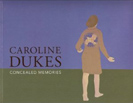
Legge, Elizabeth, and Mary Reid. Caroline Dukes: Concealed Memories (Winnipeg: Winnipeg Art Gallery / ABC Art Books Canada, 2008). This posthumously published retrospective publication traces the thirty year painting practice of Caroline Dukes (1929 – 2003). Focusing on Dukes luminous large-scale works, the authors explore the complex issues rooted in the artist s beliefs as an Orthodox Jew. They also follow the work from an early European classicism to an eventual interdisciplinary approach to image-making, with collage, photography, text and sound. Throughout, Dukes work is infused with images of memory, loss and survival. Born in Hungary and a Holocaust survivor, Dukes and her family immigrated to Canada where she was eventually able to devote herself full time to painting. She exhibited extensively throughout the country up until shortly before her death.
Robert Lewis
Associate Professor and Graduate Coordinator, Department of Geography,
University of Toronto
Chicago Made: Factory Networks in the Industrial Metropolis (Chicago: University of Chicago Press, 2008). Using Chicago as a case study, Chicago Made: Factory Networks in the Industrial Metropolis explores the relationship between the rise of industrial capitalism, the geographies of manufacturing networks, and the making of the American metropolitan economy. The book documents how manufacturers, attracted to greenfield sites on the city’s outskirts from the 1860s, began to build factory districts there with the help of an intricate network of railroad owners, real estate developers, financiers, wholesalers, and politicians. This complicated set of social ties, organizational memberships, and financial relationships transformed the economic geography of the region and created a tightly bound metropolitan economy. Chicago’s rise from a small settlement hugging Lake Michigan on the eve of the Civil War to one of the great industrial centres of the world by World War One was made possible by the ability of local growth machines to create an interlinked and intricate metropolitan economy that was embedded in the broader worlds of the region and the nation.
Bonnie S. McElhinny
Associate Professor, Department of Anthropology, Director, Women & Gender Studies Institute, University of Toronto
Words, Worlds, Material Girls: Language and Gender in a Global Economy(Berlin/New York: Mouton de Gruyter, 2007). This wide-ranging volume explores how gender and language are used and transformed to discuss, enact, and project social differences in light of global economic and political changes in the late nineteenth, twentieth, and early twenty-first centuries. It presents analyses of language and gender from a broad spectrum of national contexts: Catalonia, Canada, China, India, Japan, Nigeria, Vietnam, Philippines, Tonga, and the United States. Cases studies consider language and gender in changing workplaces, schools and immigrant integration workshops, as well as in new and emerging sites for consumption and the production of identity. They also analyze the changing meanings of multilingualism, and the construction of ideologies about gender and language in colonial and postcolonial/national ideologies. The papers engage with and contribute to theoretical conceptualizations of globalization, cosmopolitanism, (post)colonialism, (trans)nationalism, and public spheres by drawing on a variety of sociolinguistic analytic strategies (variation analysis, media analysis, interactional sociolinguistics, ethnography of speaking, sociology of language, colonial discourse analysis).
Michelle Murphy
Associate Professor, Department of History and Women and Gender Studies Institute, University of Toronto
Sick Building Syndrome and the Politics of Uncertainty: Environmental Politics, Technoscience and Women Workers (Durham, NC: Duke University Press, 2006). Before 1980, sick building syndrome did not exist. By the 1990s, it was among the most commonly investigated occupational health problems in the United States. Afflicted by headaches, rashes, and immune system disorders, office workers—mostly women—protested that their workplaces were filled with toxic hazards; yet federal investigators could detect no chemical cause. This richly detailed history tells the story of how sick building syndrome came into being: how indoor exposures to chemicals wafting from synthetic carpet, ink, adhesive, solvents, and so on became something that relatively privileged Americans worried over, felt, and ultimately sought to do something about. As Michelle Murphy shows, sick building syndrome provides a window into how environmental politics moved indoors.Sick Building Syndrome embodied a politics of uncertainty that continues to characterize contemporary American environmental debates. Michelle Murphy explores the production of uncertainty by juxtaposing multiple histories, each of which explains how an expert or lay tradition made chemical exposures perceptible or imperceptible, existent or nonexistent. She shows how uncertainty emerged from a complex confluence of feminist activism, office worker protests, ventilation engineering, toxicology, popular epidemiology, corporate science, and ecology. In an illuminating case study, she reflects on EPA scientists’ efforts to have their headquarters recognized as a sick building. Murphy brings all of these histories together in what is not only a thorough account of an environmental health problem but also a much deeper exploration of the relationship between history, materiality, and uncertainty.
Kevin O’Neill
Assistant Professor, Department and Centre for the Study of Religion, Centre for Diaspora and Transnational Studies, University of Toronto
O’Neill, Kevin. City of God: Christian Citizenship in Postwar Guatemala City(University of California Press, Anthropology of Christianity Book Series, 2009). In Guatemala City today, Christianity is not just a belief system–it is a counterinsurgency. Amidst postwar efforts at democratization, multinational mega-churches have conquered street corners and kitchen tables, guiding the faithful to build a sanctified city brick by brick. Drawing on rich interviews and extensive fieldwork, O’Neill tracks the culture and politics of one such church, looking at how neo-Pentecostal Christian practices have become acts of citizenship in a new, politically relevant era for Protestantism. Focusing on everyday practices—praying for Guatemala, speaking in tongues for the soul of the nation, organizing prayer campaigns to combat unprecedented levels of crime—O’Neill finds that Christian citizenship has re-politicized the faithful as they struggle to understand what it means to be a believer in a desperately violent Central American city. Innovative, imaginative, conceptually rich, City of God reaches across disciplinary borders as it illuminates the highly charged, evolving relationship between religion, democracy, and the state in Latin America.
David Rayside
Political Science, University of Toronto
Published Queer Inclusions, Continental Divisions: Public Recognition of Sexual Diversity in Canada and the United States (University of Toronto Press, 2008). No area of public policy and law has seen more change than lesbian, gay, bi-sexual, and trans-gender rights, and none so greatly needs careful comparative analysis. Queer Inclusions, Continental Divisions explores the politics of sexual diversity in Canada and the United States by analyzing three contentious areas – relationship recognition, parenting, and schooling. It enters into long-standing debates over Canadian-American contrasts while paying close attention to regional differences. David Rayside’s examination of change over time in the public recognition of sexual minorities is based on his long experience with the analysis of trends, as well as on a wide-ranging search of media, legal, and social science accounts of developments across Canada and the United States. Rayside points to a ‘take off’ pattern in Canadian policy change on relationship recognition and parenting, but not in schooling. At the same time, he explores the reasons for a ‘pioneering’ pattern in early gains by American LGBT activists, a surprising number of court wins by American lesbian and gay parents, and changes in American schooling that, while still modest, are more substantial than those instituted by the Canadian system. Click here for more info.

Jeffrey G. Reitz
R.F. Harney Professor of Ethnic, Immigration and Pluralism Studies, Sociology, University of Toronto
Reitz, Jeffrey. Multiculturalism and Social Cohesion: Potentials and Challenges of Diversity (Springer, 2009). Does multiculturalism ‘work’? Does multiculturalism policy create social cohesion, or undermine it? Multiculturalism was introduced in Canada in the 1970s and widely adopted internationally, but more recently has been hotly debated, amid new concerns about social, cultural, and political impacts of immigration. Advocates praise multiculturalism for its emphasis on special recognition for cultural minorities as facilitating their social integration, while opponents charge that multiculturalism threatens social cohesion by encouraging social isolation. Multiculturalism is thus rooted in a theory of human behaviour, and this book examines the empirical validity of some of its basic propositions, focusing on Canada as the country for which the most enthusiastic claims for multiculturalism have been made. The analysis draws on the massive national Ethnic Diversity Survey of over 41,000 Canadians in 2002, the most extensive survey yet conducted on this question. The analysis provides a new and more nuanced understanding of the complex relation between multiculturalism and social cohesion, challenging uncritically optimistic or pessimistic views. Ethnic community ties facilitate some aspects of social integration, while discouraging others. For racial minorities, relations within and outside minority communities are greatly complicated by more frequent experiences of discrimination and inequality, slowing processes of social integration. Implications for multicultural policies emphasize that race relations present important challenges across Quebec and the rest of Canada, including for the new religious minorities, and that ethnic community development requires more explicit support for social integration.
JOHN PAUL RICCO
Professor of Comparative Literature, Art History, and Visual Culture, UNIVERSITY OF TORONTO
Ricco, John Paul. The Decision Between Us (University of Chicago Press, 2014). The Decision Between Us combines an inventive reading of Jean-Luc Nancy with queer theoretical concerns to argue that while scenes of intimacy are spaces of sharing, they are also spaces of separation. Ricco shows that this tension informs our efforts to coexist ethically and politically, an experience of sharing and separation that informs any decision. Using this incongruous relation of intimate separation, Ricco goes on to propose that “decision” is as much an aesthetic as it is an ethical construct, and one that is always defined in terms of our relations to loss, absence, departure, and death. For more information: http://press.uchicago.edu/ucp/books/book/chicago/D/bo17577653.html
Ricco, John Paul. The Logic of the Lure (University of Chicago Press, 2002). The attraction of a wink, a nod, a discarded snapshot—such feelings permeate our lives, yet we usually dismiss them as insubstantial or meaningless. With The Logic of the Lure, John Paul Ricco argues that it is precisely such fleeting, erotic, and even perverse experiences that will help us create a truly queer notion of ethics and aesthetics, one that recasts sociality and sexuality, place and finitude in ways suggested by the anonymity and itinerant lures of cruising. Shifting our attention from artworks to the work that art does, from subjectivity to becoming, and from static space to taking place, Ricco considers a variety of issues, including the work of Doug Ischar, Tom Burr, and Derek Jarman and the minor architecture of sex clubs, public restrooms, and alleyways. The Logic of the Lure received a “Top 50 Best Book Design” award from the American Institute of Graphic Artists, and holds the distinction of being the first published monograph in queer theory/art history. For more information: http://press.uchicago.edu/ucp/books/book/chicago/L/bo3620570.html
NICHOLAS SAMMOND
Associate Professor, CINEMA STUDIES, University of Toronto
Sammond, Nicholas. Birth of an Industry: Blackface Minstrelsy and the Rise of American Animation (Duke University Press, 2015). In Birth of an Industry, Nicholas Sammond describes how popular early American cartoon characters were derived from blackface minstrelsy. He charts the industrialization of animation in the early 20th century, its representation in the cartoons themselves, and how important blackface minstrels were to that performance, standing in for the frustrations of animation workers. Cherished cartoon characters, such as Mickey Mouse and Felix the Cat, were conceived and developed using blackface minstrelsy’s visual and performative conventions: these characters are not like minstrels; they are minstrels. They play out the social, cultural, political, and racial anxieties and desires that link race to the labouring body, just as live minstrel show performers did. Carefully examining how early animation helped to naturalize virulent racial formations, Sammond explores how cartoons used laughter and sentimentality to make those stereotypes seem not only less cruel, but actually pleasurable. Although the visible links between cartoon characters and the minstrel stage faded long ago, Sammond shows how important those links are to thinking about animation then and now, and about how cartoons continue to help to illuminate the central place of race in American cultural and social life.
DANA SEITLER
ASSOCIATE PROFESSOR, DEPARTMENT OF ENGLISH, UNIVERSITY OF TORONTO
Seitler, Dana. Atavistic Tendencies: The Culture of Science in American Modernity (Minneapolis: University of Minnesota Press, 2008). A provocative exploration of the impact of the human sciences on literature, politics, and culture. The post-Darwinian theory of atavism forecasted obstacles to human progress in the reappearance of throwback physical or cultural traits after several generations of absence. In this original and stimulating work, Dana Seitler explores the ways in which modernity itself is an atavism, shaping a historical and theoretical account of its dramatic rise and impact on Western culture and imagination. Examining late nineteenth- and early twentieth-century science, fiction, and photography, Seitler discovers how modern thought oriented itself around this paradigm of obsolescence and return—one that served to sustain ideologies of gender, sexuality, and race. She argues that atavism was not only a discourse of violence—mapping racial and sexual divisions onto the boundary between human and animal—but was also an illustration of how modern science understood human being as a temporal category. On one hand, atavism positioned some humans as more advanced than others on an evolutionary scale. On the other, it undermined such progressivism by suggesting that because all humans had evolved from animals they were, therefore, not purely human. Atavism thus reveals how scientific theories of a recurrent past were a significant feature of modernity. At the beginning of the twentieth century, atavistic theory had widespread social and economic effects on the taxonomies of medicine, the logic of the welfare state, conceptions of the modern family, and images of the abnormal. Investigating the cultural logic of science in conjunction with naturalist, feminist, and popular narratives, Seitler exposes the influence of atavism: a fundamental shift in ways of knowing—and telling stories about—the modern human.
Mark Solovey
Assistant Professor, History of Psychology and Social Sciences, Institute for the History and Philosophy of Science
Solovey, Mark, and Cravens, Hamilton. Cold War Social Science: Knowledge Production, Liberal Democracy, and Human Nature (Palgrave Macmillan, 2012). From World War II to the early 1970s, American social science research expanded in dramatic and unprecedented fashion. This volume offers fascinating perspectives on the rise of U.S. practitioners as global leaders in the field, exploring how, why, and with what consequences this rapid and yet contested expansion depended on the entanglement of the social sciences with Cold War politics. Utilizing the controversial but useful concept of ‘Cold War social science,’ the histories gathered here reveal how scholars from established disciplines and new interdisciplinary fields of study made important contributions to long-standing debates about knowledge production, liberal democracy, and human nature.
Solovey, Mark. Shaky Foundations: The Politics-Patronage-Social Science Nexus in Cold War America (Studies in Modern Science, Technology, and the Environment)(Rutgers University Press, 2013). Numerous popular and scholarly accounts have exposed the deep impact of patrons on the production of scientific knowledge and its applications.Shaky Foundations provides the first extensive examination of a new patronage system for the social sciences that emerged in the early Cold War years and took more definite shape during the 1950s and early 1960s, a period of enormous expansion in American social science. By focusing on the military, the Ford Foundation, and the National Science Foundation, Mark Solovey shows how this patronage system presented social scientists and other interested parties, including natural scientists and politicians, with new opportunities to work out the scientific identity, social implications, and public policy uses of academic social research. Solovey also examines significant criticisms of the new patronage system, which contributed to widespread efforts to rethink and reshape the politics-patronage-social science nexus starting in the mid-1960s. Based on extensive archival research, Shaky Foundations addresses fundamental questions about the intellectual foundations of the social sciences, their relationships with the natural sciences and the humanities, and the political and ideological import of academic social inquiry.
ALISON SYME
Associate Professor, GRADUATE FACULTY, DEPARTMENT OF ART HISTORY
Syme, Alison. A Touch of Blossom: John Singer Sargent and the Queer Flora of Fin-de-Siècle Art (Penn State University Press, 2010) considers John Singer Sargent in the context of nineteenth-century botany, gynecology, literature, and visual culture, and argues that the artist mobilized ideas of cross-fertilization and the hermaphroditic sexuality of flowers in his work to “naturalize” sexual inversion. In conceiving of his painting as an act of hand-pollination, Sargent was elaborating both a period poetics of homosexuality and a new sense of subjectivity, anticipating certain aspects of artistic modernism. Assembling evidence from diverse realms—visual culture (cartoons, greeting cards, costume design), medicine and botany (treatises and their illustrations), literature, letters, lexicography, and the visual arts—this book situates the metaphors that structure Sargent’s paintings in a broad cultural context. It offers in-depth readings of particular paintings and analyzes related projects undertaken by Sargent’s friends in the field of painting and in other disciplines, such as gynecology and literature.
Rob Vipond
Political Science, University of Toronto
Has edited The Comparative Turn in Canadian Political Science (University of British Columbia Press, 2008). This volume is the first sustained attempt to describe, analyze, and assess the “comparative turn” in Canadian political science. Canada’s engagement with comparative politics is examined with a focus on three central questions: In what ways, and how succesfully, have Canadian scholars contributed to the study of comparative politics? Does the Canadian example have the unique potential to advance the comparative discipline? Finally, can Canadian practice and policy be reproduced in other countries? The depth and scope of analysis in The Comparative Turn will inform graduate students and scholars. Its accessible style will make the book useful to undergraduate courses in Canadian and comparative politics and to other readers interested in these topics. Click here for more info
Rinaldo Walcott
Canada Research Chair, Social Justice and Cultural Studies, Ontario Institute for Studies in Education (OISE); Department of Sociology and Equity Studies in Education
Walcott, Rinaldo, and Roy Moodley. Counseling Across and Beyond Cultures: Exploring the Work of Clemmont E. Vontress in Clinical Practice (Toronto: University of Toronto Press, Scholarly Publishing Division, forthcoming 2010). Professional counseling is a dynamic field, necessarily changing to reflect shifting societal norms and client needs. In an increasingly multicultural and globalized society, there is a growing need for counselors to be sensitive to the diverse needs of clients expressing different cultural and ethnic beliefs and facets of racial, gender, sexual, age, ability, disability, or class identities. Using as a starting point the pioneering work of Clemmont E. Vontress, the contributors toCounseling Across and Beyond Cultures trace the evolution of multicultural counseling, and discuss remaining challenges for practitioners. Essays include a personal reflection by Vontress himself, critical analyses of the growth of multicultural counseling, considerations of his influence in Canada and the UK, and African and Caribbean perspectives on his work. Throughout, the importance of Vontress’ accomplishments are celebrated, while critical analysis points the way towards further work to be done in the field.
Linda White
Associate Professor, Undergraduate Director and Associate Chair, Department of Political Science; Affiliate, School of Public Policy and Governance, University of Toronto
White, Linda A., Robert C. Vipond, and Richard Simeon. The Comparative Turn in Canadian Political Science (Vancouver: UBC Press, 2008). Over the past decade, the study of Canadian politics has changed profoundly. The introspective, insular, and largely atheoretical style that informed Canadian political science for most of the postwar period has give way to a deeper engagement with, and integration into, the global field of comparative politics. This volume is the first sustained attempt to describe, analyze, and assess the “comparative turn” in Canadian political science. Canada’s engagement with comparative politics is examined with a focus on three central questions: In what ways, and how succesfully, have Canadian scholars contributed to the study of comparative politics? Does the Canadian example have the unique potential to advance the comparative discipline? Finally, can Canadian practice and policy be reproduced in other countries? The depth and scope of analysis in The Comparative Turn will inform graduate students and scholars. Its accessible style will make the book useful to undergraduate courses in Canadian and comparative politics and to other readers interested in these topics.
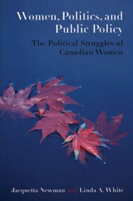
White, Linda A., and Jacquetta A. Newman. Women, Politics, and Public Policy: The Political Struggles of Canadian Women (Toronto: Oxford University Press, 2006).Women, Politics, and Public Policy seeks to show how feminist theory, the women’s movement, and public policy-making intersect. It does this by exploring how Canadian women have engaged in and are engaging in struggles against gender bias and oppression, and how this engagement relates to political action, public policy change, and the women’s movement.
